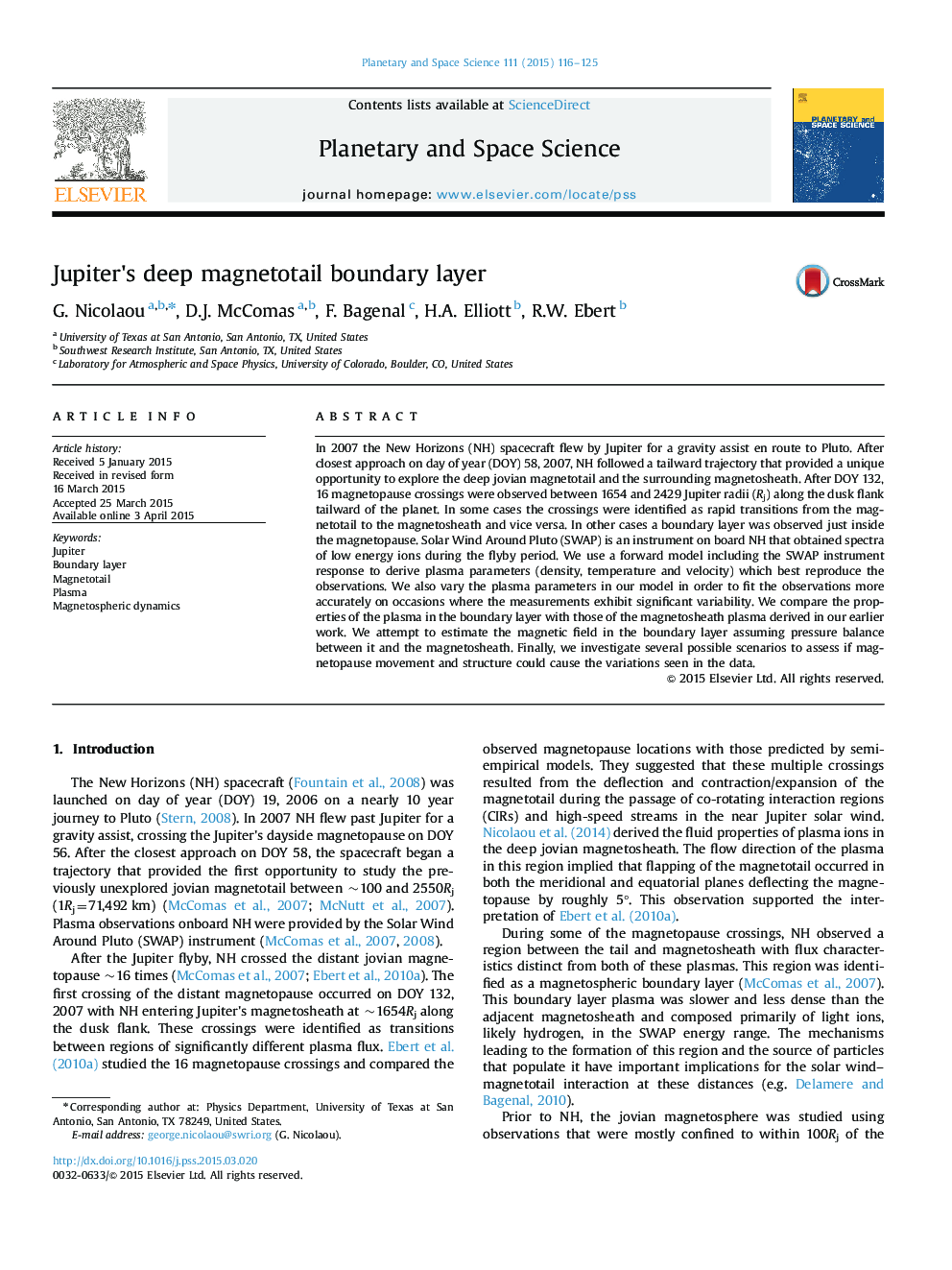| کد مقاله | کد نشریه | سال انتشار | مقاله انگلیسی | نسخه تمام متن |
|---|---|---|---|---|
| 1780991 | 1523928 | 2015 | 10 صفحه PDF | دانلود رایگان |
• Derivation of the plasma bulk properties in the deep jovian boundary layer.
• Estimation of the magnetic field in the deep jovian boundary layer.
• Examination of several scenarios for the jovian magnetotail structure and movement.
• The thermodynamic properties of the deep jovian boundary layer plasma are examined.
In 2007 the New Horizons (NH) spacecraft flew by Jupiter for a gravity assist en route to Pluto. After closest approach on day of year (DOY) 58, 2007, NH followed a tailward trajectory that provided a unique opportunity to explore the deep jovian magnetotail and the surrounding magnetosheath. After DOY 132, 16 magnetopause crossings were observed between 1654 and 2429 Jupiter radii (Rj) along the dusk flank tailward of the planet. In some cases the crossings were identified as rapid transitions from the magnetotail to the magnetosheath and vice versa. In other cases a boundary layer was observed just inside the magnetopause. Solar Wind Around Pluto (SWAP) is an instrument on board NH that obtained spectra of low energy ions during the flyby period. We use a forward model including the SWAP instrument response to derive plasma parameters (density, temperature and velocity) which best reproduce the observations. We also vary the plasma parameters in our model in order to fit the observations more accurately on occasions where the measurements exhibit significant variability. We compare the properties of the plasma in the boundary layer with those of the magnetosheath plasma derived in our earlier work. We attempt to estimate the magnetic field in the boundary layer assuming pressure balance between it and the magnetosheath. Finally, we investigate several possible scenarios to assess if magnetopause movement and structure could cause the variations seen in the data.
Journal: Planetary and Space Science - Volume 111, June 2015, Pages 116–125
